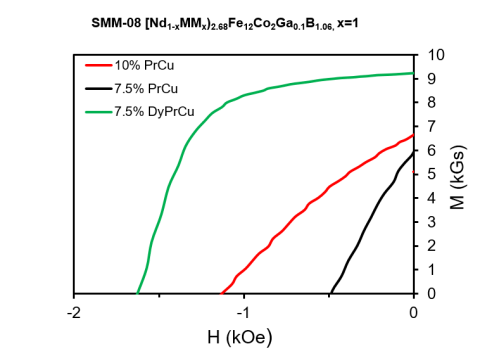CMI researchers from Ames National Laboratory conducted the activity for this highlight
Innovation
Development of rare earth free Fe-Co-B magnets through particle (grain) size and morphology control.
Achievement
- Micromagnetic simulations find Fe-Co-B may achieve a coercivity of 2.7 kOe for a polycrystalline bulk magnet with an average grain size of 20 nm. The maximum energy product (BH)m is 26 MGOe, 2-3 times as that of the best Alnico.
- Fe-Co-B nanowire (a diameter 16-30 nm and a length of 200-300nm) may gain a coercivity of 10 kOe due to magnetocrystalline- and magnetic shape anisotropy. Bonded magnet with a 65% nanowire volume has a (BH)m of 18 MGOe, larger than Nd-Fe-B anisotropic bonded magnets.
Significance and Impact
- Criticality and cost: the material has no rare earth and just 10-30 wt. percent cobalt.
- The developed Fe-Co-B magnets may partially replace rare earth magnets such as Nd-Fe-B and high-performance Alnico.
Hub Goal Addressed
Accelerated magnet discovery and maturation.

